Key fobs are a modern convenience that allows users to lock, unlock, and even start their vehicles without hassle. However, this convenience can also pose a significant security risk if the key fob is not kept secure and out of reach from potential thieves. As vehicles become more sophisticated, so do methods for unauthorized access, making it essential to ensure that your key fob is not easily accessible.
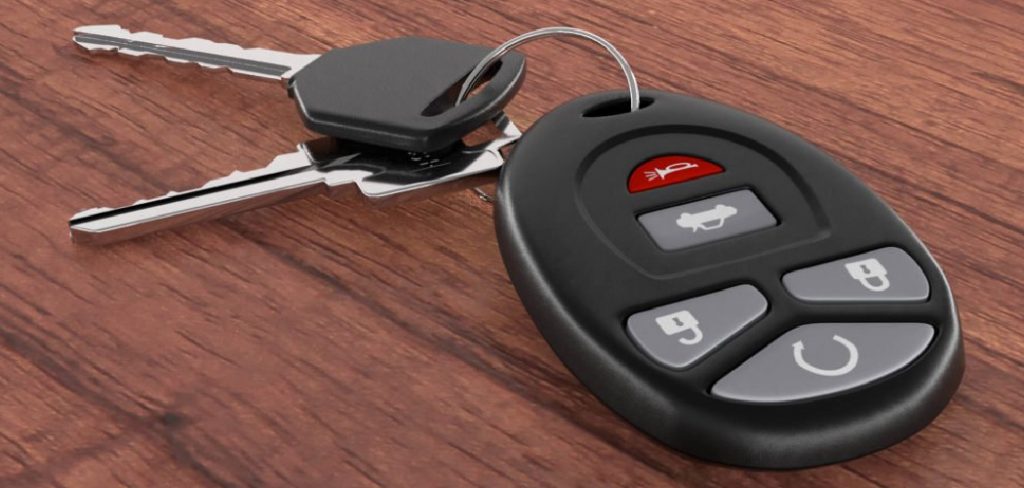
Understanding how to hide a key fob on your car safely becomes particularly crucial in situations such as visiting the gym or spending the day at the beach. This practice protects against theft and prevents accidental lockouts, which can be a major inconvenience. This article aims to equip you with effective strategies for securely hiding a key fob on or near your vehicle, helping maintain safety without compromising convenience.
Why You Should Be Cautious with Key Fobs
Vulnerability of Key Fobs
Many key fobs utilize radio signals that, while convenient, can be vulnerable to interception by thieves using key scanners or relay attacks. These attackers amplify the signal from the fob to trick the vehicle into unlocking or starting. Additionally, leaving a key fob inside or near your car poses the risk of the vehicle remaining unlocked. This occurs if the car’s systems continuously detect the signal, thereby invalidating the security provided by automatic locking features.
Potential Risks of Hiding Key Fobs Improperly
Improperly hiding a key fob can lead to significant security breaches. If a thief locates your hidden key, they gain easy access to your vehicle or, worse, the ability to drive it away. Common hiding spots, such as under a tire or inside the gas cap, are predictable and offer minimal protection from theft. It’s essential to consider the security aspect linked to the placement of your key fob in unconventional and less obvious locations.
Balancing Convenience and Security
Striking a balance between convenience and security is critical when hiding a key fob. While concealing a key fob might be beneficial during emergencies or specific situations, the chosen method should minimize security risks without compromising the vehicle’s functionality. Prioritize innovative approaches and reassess common hiding techniques to ensure that your vehicle’s protection remains intact against potential threats.
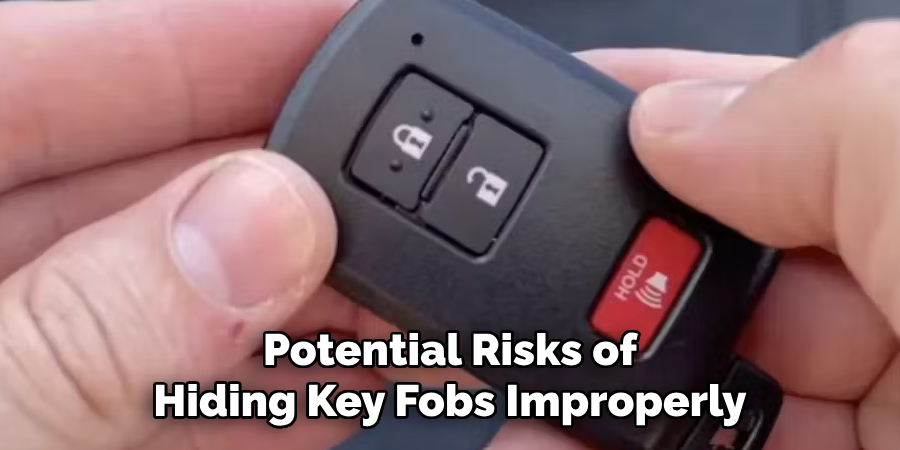
How to Hide a Key Fob on Your Car: The Best Places to Hide a Key Fob
A. Using a Magnetic Key Box
What is a Magnetic Key Box?: Magnetic key boxes are compact, secure containers designed to hold keys and adhere to metal surfaces on your car. They come equipped with strong magnets that ensure your key fob stays in place despite the bumps or jolts of driving.
How to Use It Effectively: Attach the magnetic key box underneath the car in less obvious locations, such as behind the bumper or within the vehicle’s frame, to maximize security. Avoid predictable spots like under the tire well or front fender, as these are the first places a thief might check.
Security Tips: Invest in a sturdy, weatherproof magnetic box that can withstand adverse weather conditions and resist coming loose. Ensure it has a secure closure to prevent the key from falling out, thus protecting your key fob from both theft and accidental loss.
B. Inside the Wheel Well
Advantages and Risks: The wheel well is a common hiding spot due to its accessibility. While it serves well in emergencies, the spot is rather predictable, making it crucial to enhance security by pairing it with a more secure container to prevent easy access.

How to Secure the Key: Use a magnetic case or zip ties to affix the fob inside the wheel well, ensuring it is tucked away from plain view. This tactic can add an extra layer of security while still providing convenient access when necessary.
C. Behind a License Plate
License Plate as a Discreet Location: The area behind a license plate can serve as a clever and unconventional hiding spot for a key fob. By slightly unscrewing the plate, you can slide the key into this typically overlooked space.
How to Keep It Secure: Place the key fob in a small pouch or zip-lock bag to protect it from dirt and moisture before positioning it behind the plate. Ensuring that the key is secure and weather-proofed will help maintain its functionality.
D. Roof Box or Luggage Rack
Using Roof Boxes: If your car features a roof box or a luggage rack, these can act as excellent hiding spots for a key fob due to their infrequent inspection by thieves.
Tips for Hiding the Key Fob: Safely secure the key inside the roof box or tuck it away in a hidden section of the rack to keep it out of plain sight. Ensuring the key is well-hidden provides an extra layer of security, deterring potential theft.
How to Prevent Signal Interception
A. Using a Faraday Bag
What is a Faraday Bag?: A Faraday bag is crafted from signal-blocking materials that prevent electromagnetic signals from escaping or entering. This ensures that the key fob’s signal cannot be intercepted by malicious tools that boost the fob’s signal to unlock or start a car.
How to Use It: Before considering any hiding tactics, simply place your key fob inside the Faraday bag. By securing the fob in this bag, you ensure that even if hidden in close proximity to the vehicle, it remains invisible to unauthorized signal tapping, keeping the car safe from opportunistic thieves.
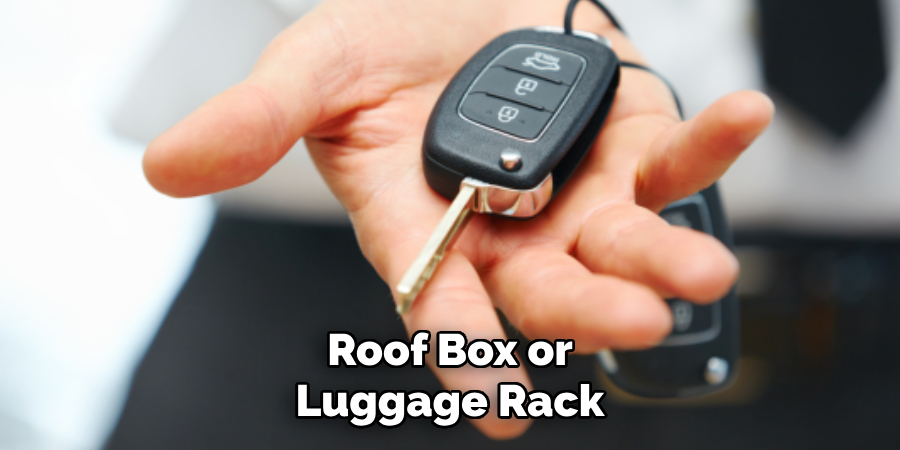
Benefits of a Faraday Bag: The Faraday bag provides a substantial layer of security by blocking any attempts at technological theft. Tech-savvy thieves often try to hack or unlock vehicles off their remote signal during vulnerable moments. The Faraday bag’s signal-blocking capability acts as a robust defense mechanism against such threats, safeguarding your vehicle from remote access.
B. Disabling the Key Fob Signal
Turning Off the Key Fob: Some sophisticated key fobs offer an off or sleep mode feature, which temporarily disables signal transmission when the fob is not actively used.
How to Activate It: For users unsure about this facility, it is advisable to consult the vehicle’s manual to determine if the key fob has this feature. Activating the off mode ensures peace of mind by effectively deterring relay attacks that tap into the fob’s signal.
Manually Disable: In the absence of a sleep mode, temporarily removing the battery from the key fob is a viable option to discontinue any signal activity, further complicating theft attempts via signal interception.
C. Using Key Fob Sleeves
Signal Blocking Sleeves: In addition to Faraday bags, there are RFID-blocking key fob sleeves or wallets crafted to shield against signal emission. These sleeves operate with similar technology, stopping any unauthorized access by cutting the signal transmission pathway.
Effective for Short-Term Hiding: When you need to hide the key fob in or near the car for short durations, inserting it in a blocking sleeve ensures it remains undetectable, thus upholding privacy and protection against unwanted entry.
D. Placing the Key Far Enough from the Vehicle
Avoid Signal Activation: Modern vehicles are engineered to pick up key fob signals within a specific proximity to facilitate easy access. The challenge lies in avoiding storage placements close enough for the car to mistakenly unlock or start.

Optimal Placement: Ensure that your chosen hiding spot is suitably distanced, generally more than 5-10 feet from the vehicle, to prevent accidental activation of the car’s locking or ignition mechanisms. This simple yet effective spatial awareness ensures that your key fob stays completely out of the car’s signal detection zone.
Other Strategies to Safeguard Your Key Fob
A. Using a Car Lockbox
What is a Car Lockbox?: A car lockbox is a small, portable safe designed to securely store items, including a key fob, within a vehicle. It can be concealed inside the car or attached to a secure area like the frame or undercarriage.
Benefits: A lockbox adds an extra layer of protection against theft, making it ideal for individuals who frequently need to hide their keys. Even if the fob is stolen, gaining entry to the car will still require significant effort and time, thus deterring potential thieves.
B. Disable Passive Entry on Your Car
What is Passive Entry?: Passive entry is a convenience feature present in many modern vehicles that automatically unlocks the car doors when the key fob is detected nearby.
How to Disable: To reduce security risks, consult your vehicle’s manual to find instructions on disabling the passive entry feature. This ensures that, even if the key fob is in close proximity, the car remains locked unless the unlock button on the fob is manually pressed. By taking control of this feature, you can better protect your car from unauthorized access and potential theft.
Hiding the Key Fob for Different Situations
A. When at the Beach or Park
Hiding in Plain Sight: When visiting the beach or park, you can use waterproof, disguised containers to conceal your key fob effectively. Containers designed to look like everyday items, such as fake soda cans, offer discreet hiding options. Place the key fob inside this container, then store it in your beach bag and keep it covered under a towel or another inconspicuous spot nearby. This method protects the fob from moisture and keeps it out of sight, reducing the risk of theft in crowded outdoor environments.
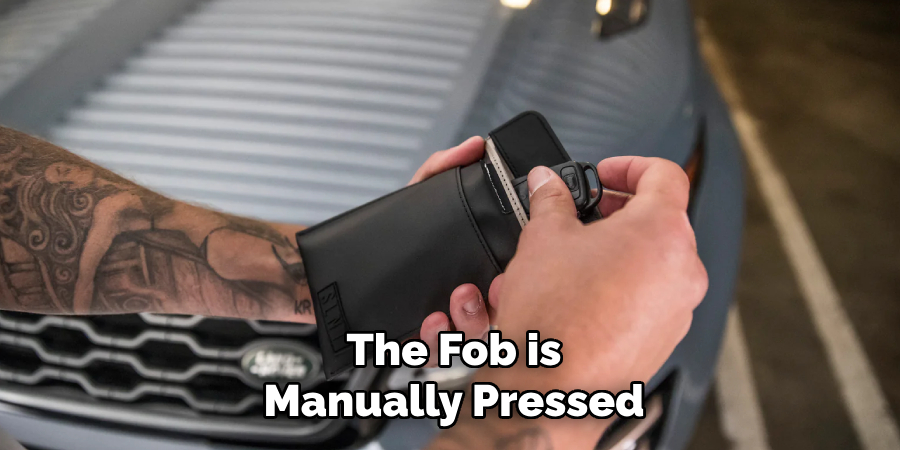
B. When Going Hiking or Camping
Leave Key Fob Near the Car: For hiking or camping trips, securing your key fob near the car is practical yet secure. A magnetic key box can be placed underneath the vehicle, offering a robust hiding solution hidden from plain view. Alternatively, use a Faraday bag to shield the fob from signal interception and then hide it within a locked compartment, such as a roof rack or other inconspicuous vehicle area. These methods ensure the fob is easily accessible upon return but protected from potential thieves or adverse weather conditions while you explore the great outdoors.
What to Avoid When Hiding a Key Fob
Avoid Common Hiding Places: Never place the key fob in easily accessible or predictable locations such as the wheel well, gas cap, or under the bumper. These areas are the first spots thieves tend to search, making them unsafe choices.
Don’t Hide the Key Inside the Car: Keeping the key fob inside the vehicle is risky. If a break-in occurs, the thief can find the fob and gain full access to the car, undermining the security measures.
Avoid Exposed Areas: Avoid hiding spots that are overly visible or vulnerable to environmental factors. Protect the key fob from moisture, dirt, or extreme temperatures that could potentially harm its functionality, preserving both security and the device’s lifespan.
Alternatives to Hiding a Key Fob
A. Using a Smart Lock or Keyless Entry System
Keyless Solutions: Transitioning to a smart lock or keyless entry system eliminates the need for a physical key fob altogether. These systems allow you to unlock and access your vehicle through a smartphone app, providing a layer of convenience and enhanced security. Some systems also offer the option of using a keypad mounted on the car, granting you entry with a personal code. This modern approach not only keeps your car safe but also means you won’t have to worry about where to hide a key fob while enjoying the freedom of being keyless.
B. Leaving the Key Fob with a Trusted Person
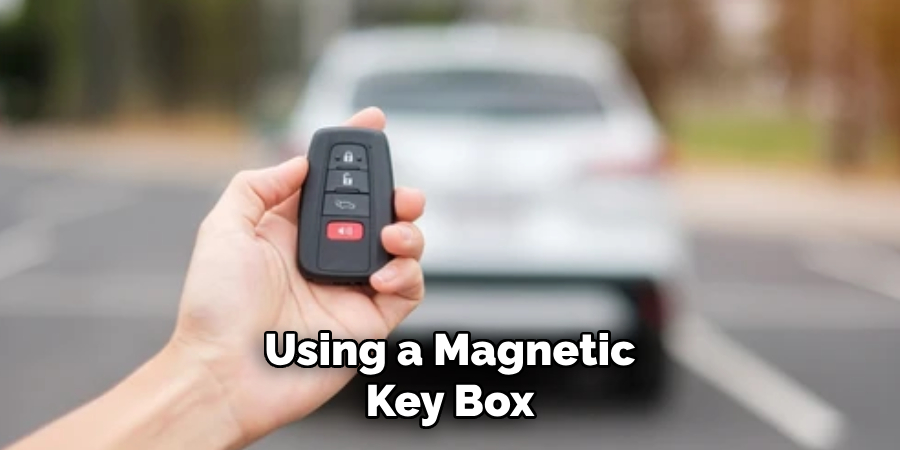
Hand Off the Fob: If concealing the key fob makes you uneasy, consider leaving it with someone you trust, such as a friend or family member, during your absence. This approach ensures that your key fob is kept safe and out of potential danger zones while you’re away from the car. Having a trusted person safeguard the fob can be particularly useful when you’re engaging in activities that make safeguarding a key inconvenient, like swimming or hiking. This way, you can focus on enjoying your activities without the hassle of hiding your key fob.
Conclusion
Understanding how to hide a key fob on your car effectively is essential for maintaining vehicle security. Several techniques, such as using magnetic key boxes and Faraday bags, allow for secure storage of your key fob near your vehicle without compromising accessibility. Implementing these strategies minimizes the risk of unauthorized access, placing your car firmly out of reach for potential thieves. It is vital to select a hiding location that balances risk reduction with convenience, considering the specific environment you encounter.
Moreover, incorporating advanced protective measures, like disabling the fob’s passive entry signal or employing a secure lockbox, can further safeguard your vehicle. By prioritizing security and convenience, you can confidently engage in activities without worrying about key fob theft or signal interception, ensuring peace of mind wherever your adventures take you.
About
Safety Fic is a distinguished figure in the world of Diy design, with a decade of expertise creating innovative and sustainable Diy solutions. His professional focus lies in merging traditional craftsmanship with modern manufacturing techniques, fostering designs that are both practical and environmentally conscious. As the author of diy, Safety Fic delves into the art and science of Safety Fic-making, inspiring artisans and industry professionals alike.
Education RMIT University
(Melbourne, Australia) Associate Degree in Design (Safety Fic) Focus on sustainable design, industry-driven projects, and practical craftsmanship. Gained hands-on experience with traditional and digital manufacturing tools, such as CAD and CNC software.
Nottingham Trent University
(United Kingdom) Bachelor’s in diyfastly.com and Product Design (Honors) Specialized in product design with a focus on blending creativity with production techniques. Participated in industry projects, working with companies like John Lewis and Vitsoe to gain real-world insights.
Publications and Impact
In diy, Safety Fic his insights on indoor design processes, materials, and strategies for efficient production. His writing bridges the gap between artisan knowledge and modern industry needs, making it a must-read for both budding designers and seasoned professionals.
